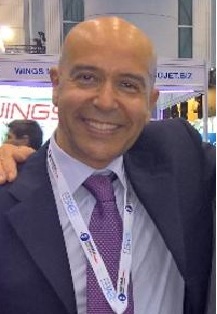See us at MRO Asia Pacific 2025
Memo: Can Aarok Break Western Europes MALE UAS Curse?
Details
More Products & Services
Products & Services
Home - Aviation Group Marketing
Aviation Week Network
120 data points on over 156,000 commercial and business aviation aircraft, including military transports. Discover the most trustworthy resource for the complete aircraft history, plus ad hoc reports, month-over-month trend analysis and details on expected deliveries through 2050.
Aerospace | Aviation Week Network
Aviation Week Network
https://aviationweek.com/themes/custom/particle/dist/app-drupal/assets/awn-logo.svg
People

Andrea Rossi Prudente
Aviation Week Network

Anthony Lim
Aviation Week Network
Sales director

Becca Balmes
Aviation Week Network

Belinda Tan
Aviation Week Network

Brian Everstine
Aviation Week Network
Editor

Eddie Krankowski
Aviation Week Network
Assistant Manager, Tradeshows

erving dockery
Aviation Week Network

Lisa Tan
Aviation Week Network
Senior Marketing Manager

Mark Thomas
Aviation Week Network
Description
LE BOURGET—A Western European-made uncrewed aircraft system (UAS) designed for medium-altitude, long-endurance (MALE) flight has been a strangely elusive goal.
A parade of Western European projects have been showcased as models in the Paris Air Show exhibit halls and static displays for two decades. The continent's MALE UAS programs have come in many shapes and sizes, including turboprops named Talarion, Mantis and Hammerhead. The jet-powered designs have been branded Barracuda, Neuron and Taranis. All such programs not originating in Turkey have now been either completed or canceled.
Only the blandly-named, Airbus-led Eurodrone program endures, and a first prototype is scheduled to enter a long-delayed construction phase in 2024.
So it is somewhat remarkable that this year's Paris Air Show will feature the public debut of the Aarok, a 5.5-ton MALE UAS designed and built secretly in France by a small company named Turgis & Gaillard.
If the Eurodrone program has a spiritual opposite, it is the Aarok.
The Eurodrone has a €7.1 billion budget, four national patrons—France, Germany, Italy and Spain), a plan to enter service in 2030 and a star-studded cast of suppliers, including Airbus, Dassault, Leonardo, Safran, Liebherr and GE.
The Aarok by contrast is self-funded by Turgis & Gaillard, a company founded over a decade ago with ambitions to be a French version of Dyncorp or Sierra Nevada Corp. The company has built a €50 million annual turnover on a diverse portfolio of defense-related services and products, including maintaining niche special mission fleets and producing remote-controlled munitions loaders for French fighters.
Even the size of the Aarok pales in comparison to the Eurodrone. Its 5.5-ton platform is exactly half the size of the 11-ton-class Eurodrone, which is itself twice the size of such MALE UAS heavyweights as the General Atomics-Aeronautical Systems (GA-ASI) MQ-9 and Israel Aerospace Industries' Heron TP.
But Turgis & Gaillard considers the disparity with Eurodrone as a feature instead of a flaw in the Aarok's business case.
For France to join the club of nations with operational MALE UAS programs—namely China, Israel, Turkey and the U.S.—the key may be following in the footsteps of Abe Karem, who invented the Predator before it was acquired by GA-ASI, and Turkey's Baykar, which has fielded the Bayraktar and Akinci with the Turkish and other militaries.
Karem developed what became the Predator in his southern California garage. The Bayraktar brothers developed their eponymous UAS while running a large precision machining business for the automotive industry.
Western Europe has preferred sprawling national programs to develop MALE UAS so far without success. The Aarok hopes to break that streak by fielding a product before the scheduled first flight of the Eurodrone.
A parade of Western European projects have been showcased as models in the Paris Air Show exhibit halls and static displays for two decades. The continent's MALE UAS programs have come in many shapes and sizes, including turboprops named Talarion, Mantis and Hammerhead. The jet-powered designs have been branded Barracuda, Neuron and Taranis. All such programs not originating in Turkey have now been either completed or canceled.
Only the blandly-named, Airbus-led Eurodrone program endures, and a first prototype is scheduled to enter a long-delayed construction phase in 2024.
So it is somewhat remarkable that this year's Paris Air Show will feature the public debut of the Aarok, a 5.5-ton MALE UAS designed and built secretly in France by a small company named Turgis & Gaillard.
If the Eurodrone program has a spiritual opposite, it is the Aarok.
The Eurodrone has a €7.1 billion budget, four national patrons—France, Germany, Italy and Spain), a plan to enter service in 2030 and a star-studded cast of suppliers, including Airbus, Dassault, Leonardo, Safran, Liebherr and GE.
The Aarok by contrast is self-funded by Turgis & Gaillard, a company founded over a decade ago with ambitions to be a French version of Dyncorp or Sierra Nevada Corp. The company has built a €50 million annual turnover on a diverse portfolio of defense-related services and products, including maintaining niche special mission fleets and producing remote-controlled munitions loaders for French fighters.
Even the size of the Aarok pales in comparison to the Eurodrone. Its 5.5-ton platform is exactly half the size of the 11-ton-class Eurodrone, which is itself twice the size of such MALE UAS heavyweights as the General Atomics-Aeronautical Systems (GA-ASI) MQ-9 and Israel Aerospace Industries' Heron TP.
But Turgis & Gaillard considers the disparity with Eurodrone as a feature instead of a flaw in the Aarok's business case.
For France to join the club of nations with operational MALE UAS programs—namely China, Israel, Turkey and the U.S.—the key may be following in the footsteps of Abe Karem, who invented the Predator before it was acquired by GA-ASI, and Turkey's Baykar, which has fielded the Bayraktar and Akinci with the Turkish and other militaries.
Karem developed what became the Predator in his southern California garage. The Bayraktar brothers developed their eponymous UAS while running a large precision machining business for the automotive industry.
Western Europe has preferred sprawling national programs to develop MALE UAS so far without success. The Aarok hopes to break that streak by fielding a product before the scheduled first flight of the Eurodrone.

Share
Recent Chats
Share via email
Future: handle WhatsApp here
Future: handle LinkedIn here
Future: handle Twitter here
SUBMENU HERE
Share via Chat
Copy Link

